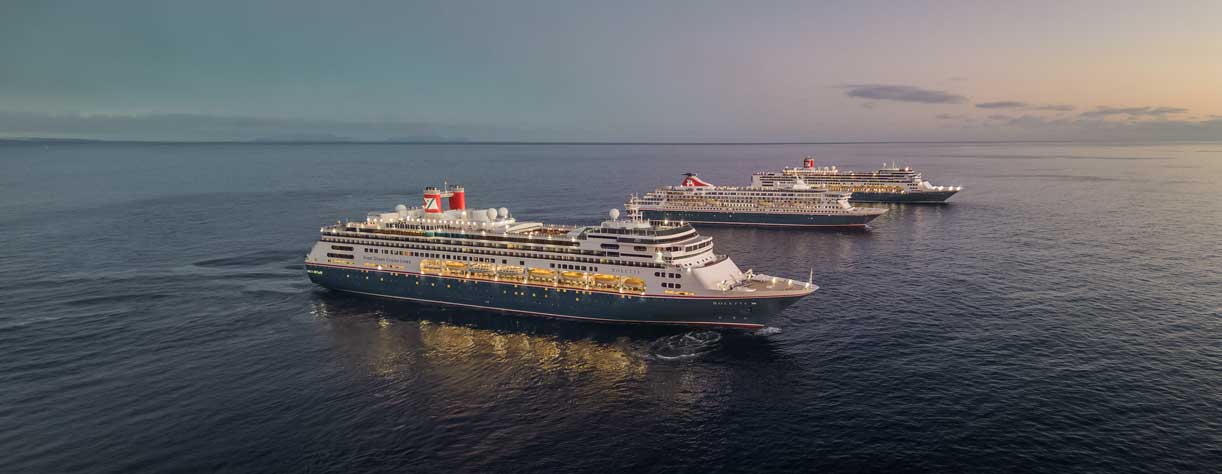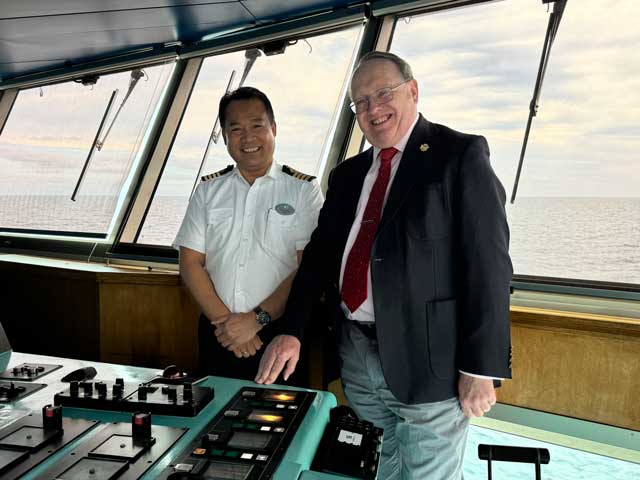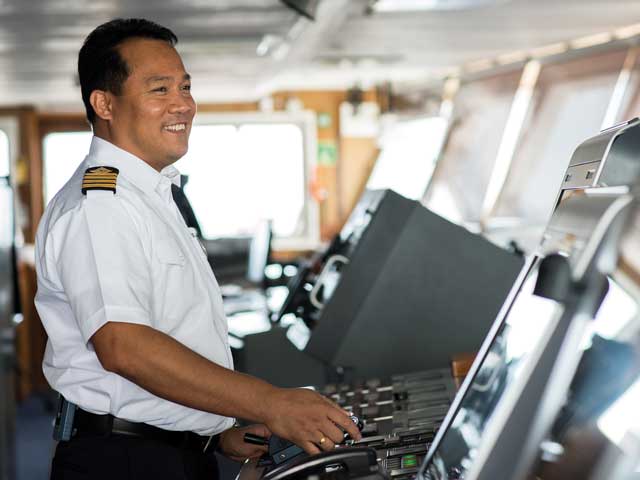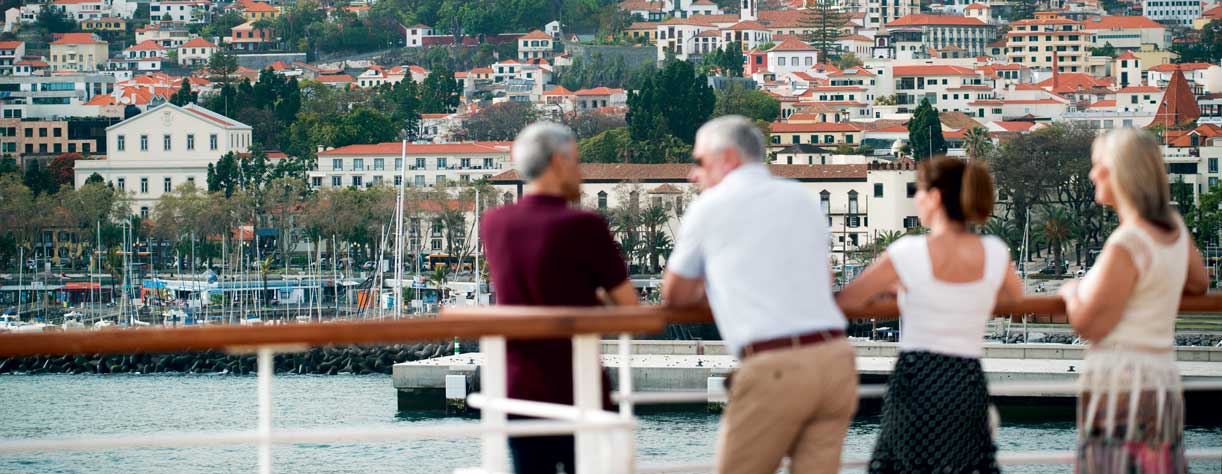There’s a cruise ship for every taste
Modern cruising is an industry that’s enjoying an exciting renaissance. One of the things that’s helping the growth is the sheer variety of experiences available. That is driven by the many different types of cruise ships plying the seas of the world.
For a true insider look at what makes a cruise ship unique, we asked renowned naval architect Stephen Payne to share some thoughts with us. With a speciality in passenger ship design, Stephen served as the Owner’s Project Manager during the construction of our flagship, Borealis. He also served as designer of the transatlantic liner Queen Mary 2.
Honoured with an Order of the British Empire (OBE) by the late HM Queen Elizabeth II, Payne also held the position of the youngest President of The Royal Institution of Naval Architects from 2007 to 2010. He was also awarded the Merchant Navy Medal for his distinguished service in the field. In short, he’s the perfect person to ask about all things related to ship design.
Captain Rommel Pineda and Dr Stephen Payne on the Bridge of Borealis
Understanding cruise ship differences
“Maritime regulations result in a very high standard of safety in design and operation of passenger ships,” begins Stephen. “But the naval architect must always use his skill and judgement. Ships are never big enough to incorporate everything [so] the naval architect must use his judgement and skill. It is a balancing act.”
The result is that every cruise ship is unique, offering its own special passenger experience. That said, there are some key commonalities between ships - particularly when it comes to size. This is why looking at the categories of small, medium and large ships can be so helpful.
Small cruise ships
There’s no set definition of a “small cruise ship”, but in the industry, it generally means one for around one thousand guests. Some can carry as few as 100 guests, however – particularly those designed for river or coastal routes.
Small cruise ships come with a few perks. The first is physical. A small vessel can simply fit in narrower channels, and dock at shallower ports than larger ones can. That means that they can go to less-travelled places straight away. For example, they are better equipped to cruise along rivers deeper into a country and stop off at small towns, not just cities with large ports.
Being small also means passengers tend to have a more personal experience. That’s partly because the crew-to-passenger ratio is usually higher. There are more cabin staff, bartenders, chefs, and other crew members for each passenger. They also tend to live life at a slower pace, giving passengers more time to do their own thing.
The drawback is that there won’t be as much choice on board. They’re too small for swimming pools and theatres. Very small ships aren’t designed for oceans, so they tend to have limited routes. For the people who love these types of cruises, though, these are not drawbacks – they’re benefits!
Medium-sized cruise ships
Nowadays, ships with a capacity of about 1,500 to 2,500 guests are considered mid-sized. Not too long ago, that would have put them among the giants of the oceans. At Fred. Olsen, we see this size of ship as perfect for the types of cruises we offer. Our three ships, Bolette (1,338 passengers), Borealis (1,353) and Balmoral (1,325) all occupy the lower end of “medium”.
“Borealis is one of the fastest passenger cruise ships in the world,” notes Stephen, who designed the flagship vessel. “In today’s world of mega ships, she is mid-sized and can operate to and from ports where larger ships may be denied due to their size.”
Inspired by the famed Rotterdam V (her predecessor), Stephen continues, “Special care was provided to ensure adequate luggage space would be provided for extended voyages.” The ship was also given powerful machinery to allow her to operate at high speed when required to traverse large expanses of ocean within a reasonable time.
Of course, the personal touch on any ship is assured by high crew-to-passenger ratios on board, and this is a priority at Fred. Olsen. Our ships are large enough to sail across oceans, but nimble enough to go deep into fjords and dock at smaller ports. They’re perfect for excursions and tailored experiences.
This size of the ship allows guests a bit more space and room for larger facilities. Because they are visiting more interesting places, they attract a cultured, worldly-wise clientele. You can expect pools, spas, shops and theatres, as well as bars and restaurants serving mouth-watering cuisine. But there’s nothing over the top – it’s all on a manageable scale. The overall experience is a sweet balance of comfort, discovery and entertainment.
Large cruise ships
Over the past 20 years or so, the definition of “large” has shifted somewhat. It started with the launch of the mega cruise ships. In the late 1980s, Sovereign of the Seas (2,800 passengers) marked a real leap in ambition. But that was dwarfed by what would follow in its wake. Current;y the worlds largest cruise ship, Icon of the Seas, can carry over 7,000 passengers and 2,500 crew. At more than 360 metres from bow to stern, it’s longer than the world’s largest aircraft carrier.
This type of cruise ship is popular with families and couples who want something different to a package holiday. They cater to customers who like their time to be full of razzmatazz and entertainment. Think water slides, shopping malls, climbing walls, big-budget performances and dozens of eateries.
It’s fair to say that the destination is less important than the cruise itself to most passengers, although they do visit major tourist spots. The cruises also tend to be for a week or longer. Getting all those people on and off is a logistical feat that doesn’t lend itself to weekend breaks.
How fast do cruise ships go?
Speeds vary between cruise ships, but they are generally in the region of 22 knots, which is about 25 mph. At top speed, that’s 600 miles (960 km) per day. Smaller ships might be a little faster at full steam. They also accelerate, decelerate and dock more quickly. For the most part, speed doesn’t make too much difference to the experience. Life on board is what people cruise for.
It’s all about you
Even within the three size categories, there’s still a huge range of differences between cruise ships. All cruise companies put their own emphasis on certain aspects of the cruising experience. At Fred. Olsen, it’s about stimulating experiences and destinations for people who appreciate the finer things.
“A passenger ship is like a small town at sea,” concludes Stephen. “It is very rewarding to be able to design a ‘floating town’ dedicated to providing guests with memorable travelling experiences.”
What’s great about our industry is that there’s no right or wrong way to cruise. Everyone has their own preferences, and if you know what you like, there will be a cruise that’s designed just for you. Moreover, cruises always offer enough variety to give people options. Plenty of our guests never set foot in a pool, and that’s fine!
We’d urge anyone who’s contemplating a cruise to have a deep dive into the itinerary and the ship’s amenities. Once you know what’s on offer, you can start to curate your own experience. Two separate people on the same cruise can have completely different experiences. And as far as we’re concerned, that’s what makes the perfect holiday.
How fast do cruise ships go?
Speeds vary between cruise ships, but they are generally in the region of 22 knots, which is about 25 mph. At top speed, that’s 600 miles (960 km) per day. Smaller ships might be a little faster at full steam. They also accelerate, decelerate and dock more quickly. For the most part, speed doesn’t make too much difference to the experience. Life on board is what people cruise for.
It’s all about you
Even within the three size categories, there’s still a huge range of differences between cruise ships. All cruise companies put their own emphasis on certain aspects of the cruising experience. At Fred. Olsen, it’s about stimulating experiences and destinations for people who appreciate the finer things.
“A passenger ship is like a small town at sea,” concludes Stephen. “It is very rewarding to be able to design a ‘floating town’ dedicated to providing guests with memorable travelling experiences.”
What’s great about our industry is that there’s no right or wrong way to cruise. Everyone has their own preferences, and if you know what you like, there will be a cruise that’s designed just for you. Moreover, cruises always offer enough variety to give people options. Plenty of our guests never set foot in a pool, and that’s fine!
We’d urge anyone who’s contemplating a cruise to have a deep dive into the itinerary and the ship’s amenities. Once you know what’s on offer, you can start to curate your own experience. Two separate people on the same cruise can have completely different experiences. And as far as we’re concerned, that’s what makes the perfect holiday.





